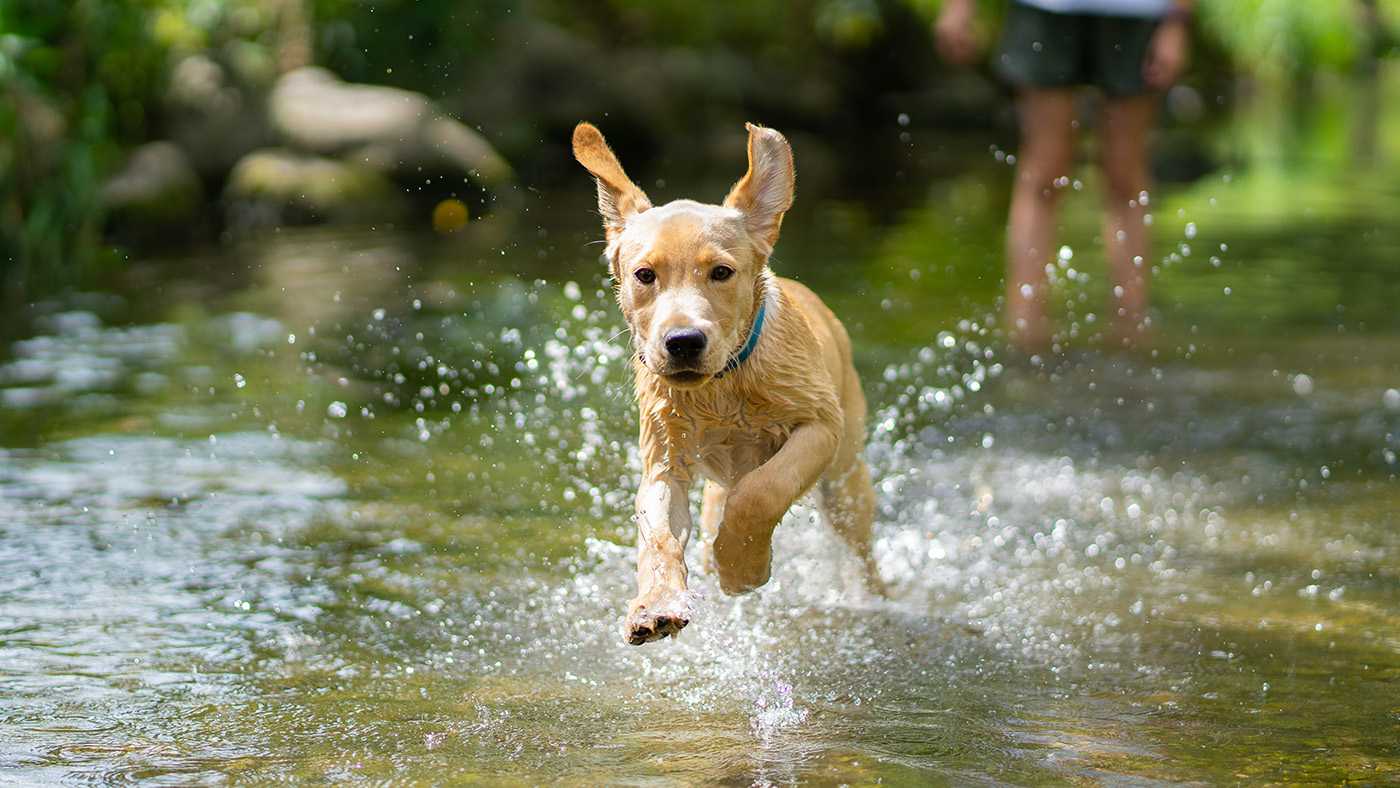Vet warns dog owners to avoid lakes and ponds with heatwaves approaching
There are dangers we can’t see with the naked eye

We’re right in the thick of summer, and many areas have been experiencing heatwaves. Dozens of people have been hospitalized across North America in recent days, and people are being urged to keep themselves safe.
But it’s not just humans who are affected by heatwaves, of course. Our pets can suffer in the heat, too. Your dog might enjoy getting respite in the water when it’s hot, but this can also be dangerous if blue-green algae, or cyanobacteria, is present – if you set your dog free from one of the best dog leashes on your walk, it’s important to keep an eye on where they’re going.
Fortunately, Dr Sean McCormack, head vet at Tails.com, has outlined the risks of blue-green algae, and we all need to know.
First of all, blue-green algae often aren’t visible to the naked eye, so you might not realize their presence. But when it blooms and forms clumps, you’ll notice its soup-like appearance and pea-green color. It shouldn’t be confused with green algae, which looks more like a stringy plant.
Not all blue-green algae are toxic, but some strains can be harmful, potentially causing the following symptoms – both humans and dogs can be affected, but the impact on dogs may be more severe:
- Vomiting and nausea
- Skin irritation
- Loss of appetite
- Diarrhea
- Excessive drooling
- Disorientation or confusion
- Difficulty breathing
- Seizures
- Weakness, collapse, and unconsciousness
The toxins produced by blue-green algae can interfere with your dog’s liver function, and in some cases, exposure to these toxins can be fatal or cause serious lasting health problems.
If you are thinking of taking your dog swimming, or letting them in the water on a walk, it’s best to err on the side of caution and avoid letting them enter any water that might be suspicious. Instead, Dr McCormack advises visiting a dog-friendly swimming pool with your pup – there are lots of ways your dog benefits from swimming, so there are alternatives if you don’t want them to miss out. You could also invest in one of the best dog swimming pools for your back yard so that your dog can enjoy water safely.
Get the best advice, tips and top tech for your beloved Pets
“If you suspect your dog has come into contact with blue-green algae or ingested contaminated water, contact your vet immediately,” he adds. “Unfortunately, there is currently no specific antidote for blue-green algae poisoning in dogs. Prompt treatment is vital to reduce the chances of serious or lasting health effects.”
Your vet may induce vomiting if it hasn’t been long since your dog ingested the algae. If it’s a more serious case, however, a spell in intensive care may be required.
Read next: Heatstroke in dogs or 7 vet-approved ways to keep your dog cool this summer

Adam is a freelance journalist specialising in pets, music and culture, and mental health and wellbeing. He investigates and writes the large majority of news on PetsRadar, and collaborates with veterinary experts to produce informative pet care content.
Adam has a journalism degree from Southampton Solent University and a masters degree in Magazine Journalism from Cardiff University. He was previously senior editor at dog advice website DogTime.com, and has also written for The Independent, GoodToKnow and Healthline.
He owns two rescue cats, Bunny and Dougie, and has also previously had a rabbit, fish and Roborovski dwarf hamsters.
